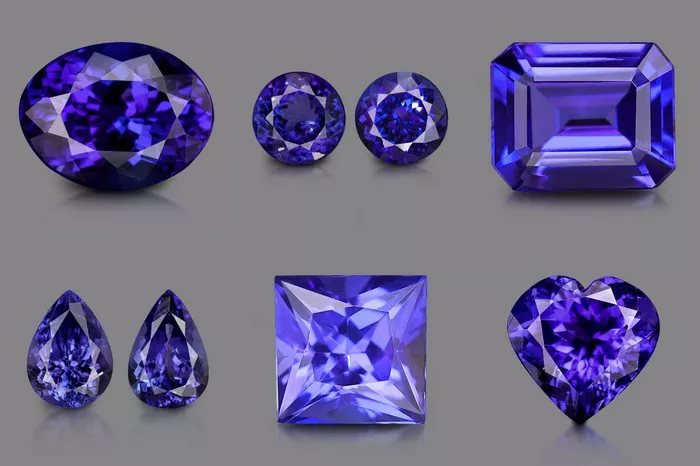Sapphire is one of the most highly valued gemstones in the world, renowned for its stunning beauty, exceptional hardness, and rich history. But just how expensive is sapphire? In this article, we’ll explore the factors that influence the price of sapphire, from its color and clarity to its size and origin, to help you understand why sapphire can be a significant investment.
Sapphire, the birthstone of September, has captivated humans for centuries with its mesmerizing blue hues and enduring allure. Beloved by royalty and coveted by collectors, sapphire has earned its place as one of the most sought-after gemstones in the world. But beyond its aesthetic appeal, sapphire’s value is determined by a combination of factors that contribute to its rarity and desirability.
Understanding Sapphire
Sapphire belongs to the corundum family of minerals, which also includes ruby. While sapphire is typically associated with the color blue, it can occur in a variety of hues, including pink, yellow, green, purple, and orange. The presence of trace elements such as iron, titanium, and chromium determines the color of sapphire, with blue sapphire being the most prized and valuable.
In addition to its color, sapphire is valued for its exceptional hardness, scoring 9 on the Mohs scale of mineral hardness, just below diamond. This makes sapphire an excellent choice for use in jewelry, as it is highly resistant to scratching and abrasion.
Sapphire is found in various locations around the world, including Sri Lanka, Myanmar, Madagascar, Australia, and the United States. Each region produces sapphires with unique characteristics, such as color, clarity, and size, which can influence their value in the market.
Factors Influencing Sapphire Price
The price of sapphire can vary significantly depending on a range of factors, including:
Color: The most important factor influencing the price of sapphire is its color. Blue sapphires with a deep, vivid hue and excellent saturation command the highest prices, particularly those with a medium to medium-dark tone. Sapphires that exhibit secondary hues, such as violet or green, may be less valuable than those with a pure blue color.
Clarity: Clarity refers to the presence of internal inclusions or blemishes within the sapphire. While most sapphires contain some degree of imperfections, those with minimal inclusions and excellent transparency are considered more valuable. Inclusions can affect the brilliance and sparkle of a sapphire, so stones with higher clarity grades command higher prices.
Cut: The cut of a sapphire can greatly influence its beauty and value. Well-cut sapphires will exhibit optimal brilliance and sparkle, enhancing their overall appearance. The most popular cuts for sapphire include oval, round, cushion, and emerald, with precision-cut stones commanding higher prices.
Carat Weight: Like other gemstones, sapphire is priced according to its carat weight, with larger stones typically being more valuable than smaller ones. However, the price per carat may increase exponentially for sapphires above a certain size threshold, as larger stones are rarer and more difficult to find.
Origin: The geographic origin of a sapphire can also impact its price and desirability. Sapphires from certain regions, such as Kashmir, Burma (now Myanmar), and Sri Lanka, are highly prized for their exceptional color and clarity. Sapphires from these sources often command premium prices in the market due to their rarity and historical significance.
Treatment: It’s common for sapphires to undergo various treatments to enhance their color and clarity. Heat treatment, in particular, is widely accepted in the gemstone industry and can improve the color and clarity of sapphires. However, sapphires that have undergone more invasive treatments or enhancements may be less valuable than untreated or minimally treated stones.
Is Sapphire Expensive?
In general, sapphire is considered a relatively expensive gemstone, especially when compared to more common gemstones like amethyst or citrine. The price of sapphire can range from a few hundred dollars per carat for lower-quality stones to tens of thousands of dollars per carat for exceptional specimens.
For example, a small, commercial-grade blue sapphire with moderate color and clarity may cost around $100 to $500 per carat. In contrast, a high-quality, untreated Kashmir sapphire with a deep, velvety blue color and minimal inclusions could fetch upwards of $10,000 per carat or more.
Ultimately, the price of sapphire is determined by a combination of its color, clarity, cut, carat weight, origin, and treatment, as well as market demand and other economic factors. While sapphire may be considered expensive relative to other gemstones, its enduring beauty and rarity make it a worthy investment for those seeking a truly exceptional piece of jewelry.
Conclusion
Sapphire is a gemstone of unparalleled beauty and value, cherished for its exquisite color, exceptional hardness, and timeless appeal. While sapphire may be considered expensive compared to other gemstones, its price is justified by its rarity, quality, and desirability in the market. By understanding the factors that influence the price of sapphire, you can make informed decisions when purchasing or investing in these precious gemstones, ensuring that you acquire a piece of jewelry that is both stunning and enduring.


